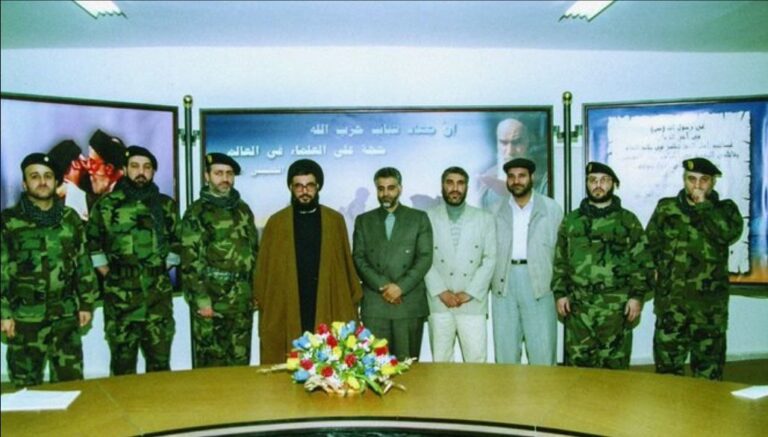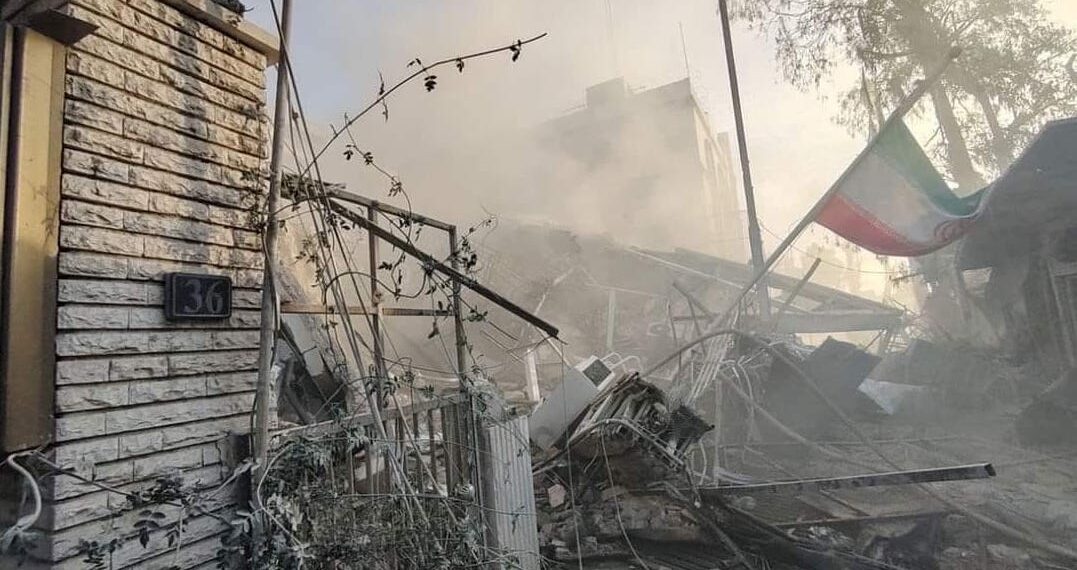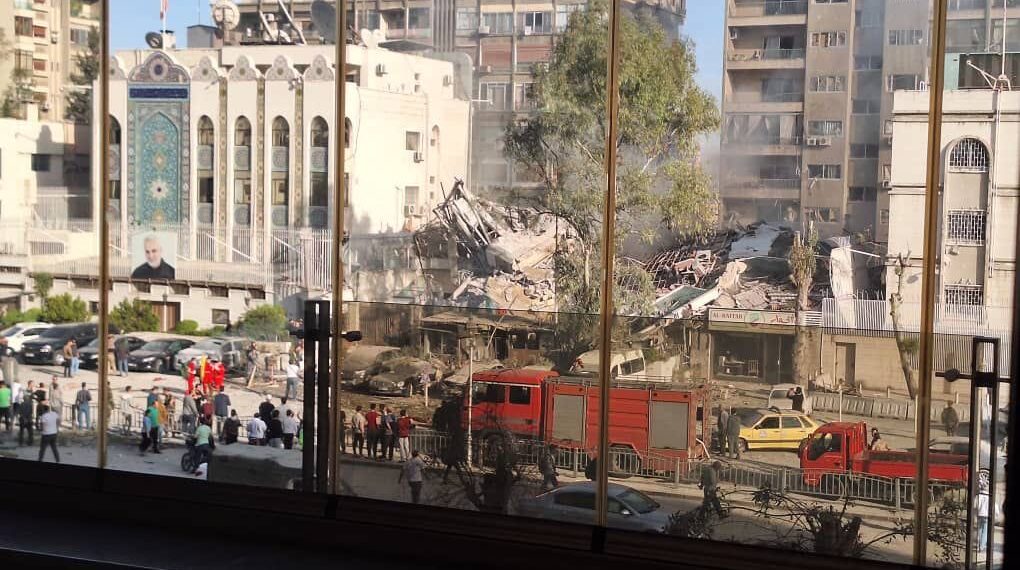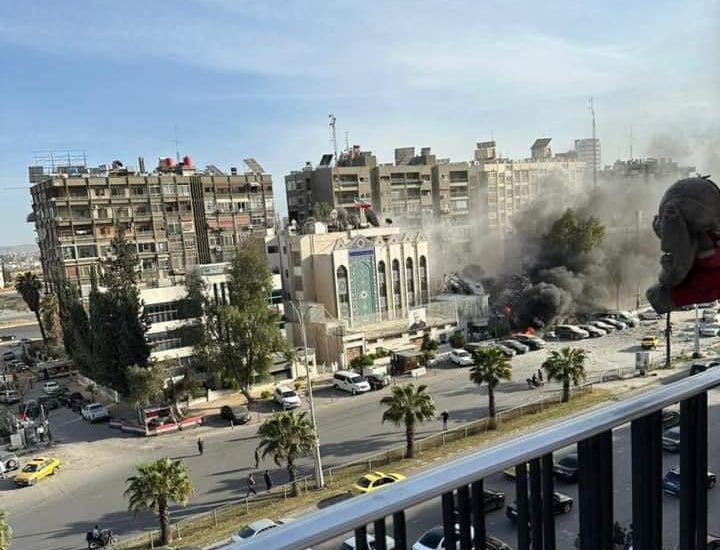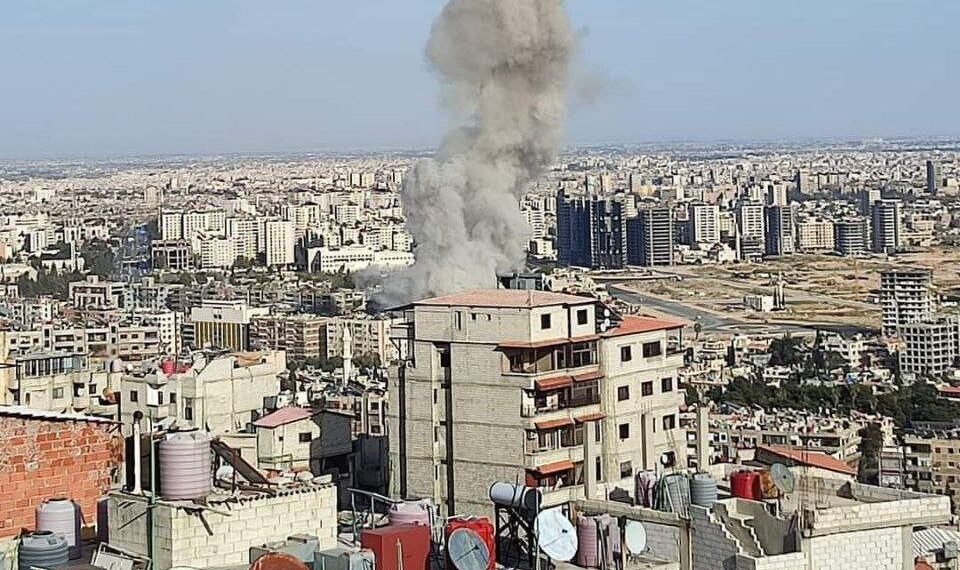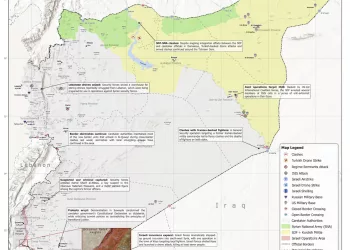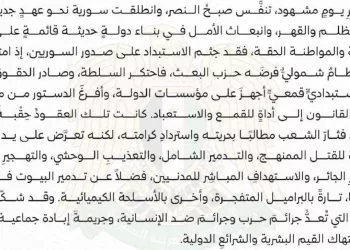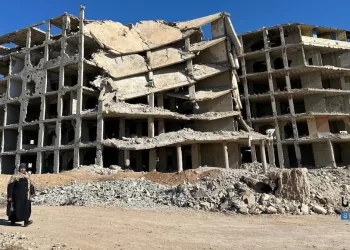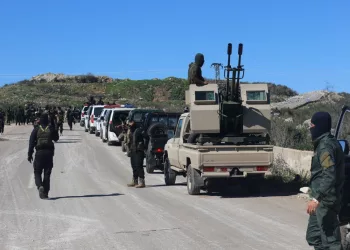At least seven senior Iranian commanders were killed in yesterday’s Israeli attack on the Iranian consulate in Damascus. The Israeli airstrikes completely destroyed the consulate building, located next to the Iranian embassy in the capital’s western Al-Mezzeh district.
The targeting of the Iranian consulate—paramount to an attack on Iranian soil—and the number of high-level casualties represent a serious escalation that will likely reverberate throughout Syria and the region for some time to come. Israel is striking at Iran’s command-and-control structure in Syria, while already in conflict with Hamas to the south and Hezbollah to the north, sending a clear message that it is willing to escalate against Iran and its proxies throughout the region.
This latest strike follows a decline in cross-border exchanges between Israel and Iranian-backed militias in south-west Syria. During the height of hostilities in October and November last year, militias launched attacks toward the occupied Golan Heights on a near-daily basis.
This most recent airstrike will likely change that in the short-term, potentially precipitating an escalation in retaliatory Iranian-backed drone strikes and shelling in the region. However, an immediate, major response from Iran is not expected; rather, it will respond strategically in due time, in line with its calculated, long-game approach to the region.
Strategic Targets
The Damascus airstrikes mark a significant escalation in the ongoing conflict between Israel and Iran. Among the dead was Muhammad Reza Zahedi, commander of the Islamic Revolutionary Guard Corps’ (IRGC) Quds Force in Syria.
Six other IRGC officials were killed in the strike: Hadi Rahimi, Hussein Aman Allah (chief of general staff for Syria and Lebanon), Mahdi Jalalati, Mohsen Sadaqat, Ali Agha Babaei and Sayed Ali Salehi.
The IRGC and its elite Quds Force are responsible for maintaining Iran’s land corridor across Syria. With its facilitation, Iran is able to transfer weapons and logistical supplies via north-east Syria to Damascus and Lebanon, often in coordination with the regime’s security apparatus.
Days before the strike that killed Zahedi, Israel launched a multi-pronged aerial attack that targeted several Syrian Scientific Research Center (SSRC)-linked sites around the city of Aleppo. SSRC locations are used for Syrian-Iranian cooperation to develop and advance weapons for the benefit of Iran’s allies and proxies. The attacks inflicted dozens of casualties among regime and Hezbollah personnel, and caused significant material damage to several Syrian-Iranian missile development and storage sites.
The Quds Force is the primary Iranian actor responsible for maintaining Iran’s presence in Syria. It maintains close relationships with the regime leadership while also embedding itself across the regime’s military-security apparatus. Notably, the Quds Force has been particularly active in facilitating recent attacks against Israel and the occupied Golan by Iranian-backed proxies based in south-west Syria.
Iran & Israel since 7th October
For years, Israel has carried out intermittent attacks on Iranian targets in Syria, but the strikes significantly escalated after the outbreak of hostilities on 7th October.
Well before October, Hezbollah and other Iranian-backed militias had already secured a strong presence across Syria, especially in the south-west of the country. With heavy Iranian-linked military redeployments to the area, these groups have been able to carry out more attacks targeting Israel or Israeli-occupied territory. Increasingly, though, Israel has honed in on targeting strategic, high-level individuals in the Iranian security apparatus. In late January, for example, a similar airstrike targeted an IRGC building in Damascus’ Al-Mezzeh area, killing four senior IRGC commanders.
Iran in Syria
Strategically positioned to the east of Israel and Lebanon, Syria is a key space for Iran to project and preserve its regional influence. In Damascus, senior Iranian officials and IRGC commanders maintain close relationships with high-level Syrian regime figures; Hezbollah, too, has a strong influence in western parts of the capital, where the most recent attacks took place.
Having stabilized the Assad regime and embedded proxy forces throughout strategic areas of south and west Syria, Iran now maintains two direct frontlines with Israel via Lebanon and Syria, with the IRGC able to closely manage military strategies and tactics in these areas while delegating much of the on-the-ground combat to proxy forces—not least Hezbollah, Iran’s primary combat ally in the region.
Illustrating the close ties between Tehran and Damascus, almost immediately after the strike Syria’s foreign minister personally visited the damaged consulate and spoke on the phone with his Iranian counterpart.
International Response
Unlike previous Israeli attacks on Syrian territory, yesterday’s strikes invoked condemnations from key Arab states. Saudi Arabia, Qatar, the UAE and Egypt all strongly condemned the attacks, noting Israel’s violation of the protection of diplomatic missions abroad.
Russia, whose relationship with Israel has been increasingly strained since the outbreak of hostilities in October, called the strikes “completely unacceptable.”
Until recently, Russia and Israel maintained open de-confliction channels regarding Syria, but this communication has broken down in recent months. Since the 7th October attacks, Russia has increasingly distanced itself from Israel, siding with the Iranian-backed “axis of resistance” comprising Iran, Hezbollah, the Assad regime, Hamas and Palestinian Islamic Jihad.
In Tehran, authorities have vowed to deliver a harsh response. Iranian proxy forces across the region have similarly promised to retaliate.
Local Response
The evening after the strikes, men in the northern Aleppo city of Marea distributed sweets to the public while carrying signs with them that read: “Regarding the death of Hassan Nasrallah and Imad Mughniyeh’s friends.” They, and many others who oppose the regime, carry resentment toward Iran for keeping Assad in power and facilitating displacements and egregious rights abuses since 2011.
In the south-west, Syrians have long been calling for the removal of Hezbollah and Iranian-backed militias. Deeply entrenched there, Iran and its proxies threaten the security of neighboring states (including Israel), facilitate cross-border transfer of weapons to Hezbollah in Lebanon, and profit from the illicit narcotics trade linked to the Assad regime.


